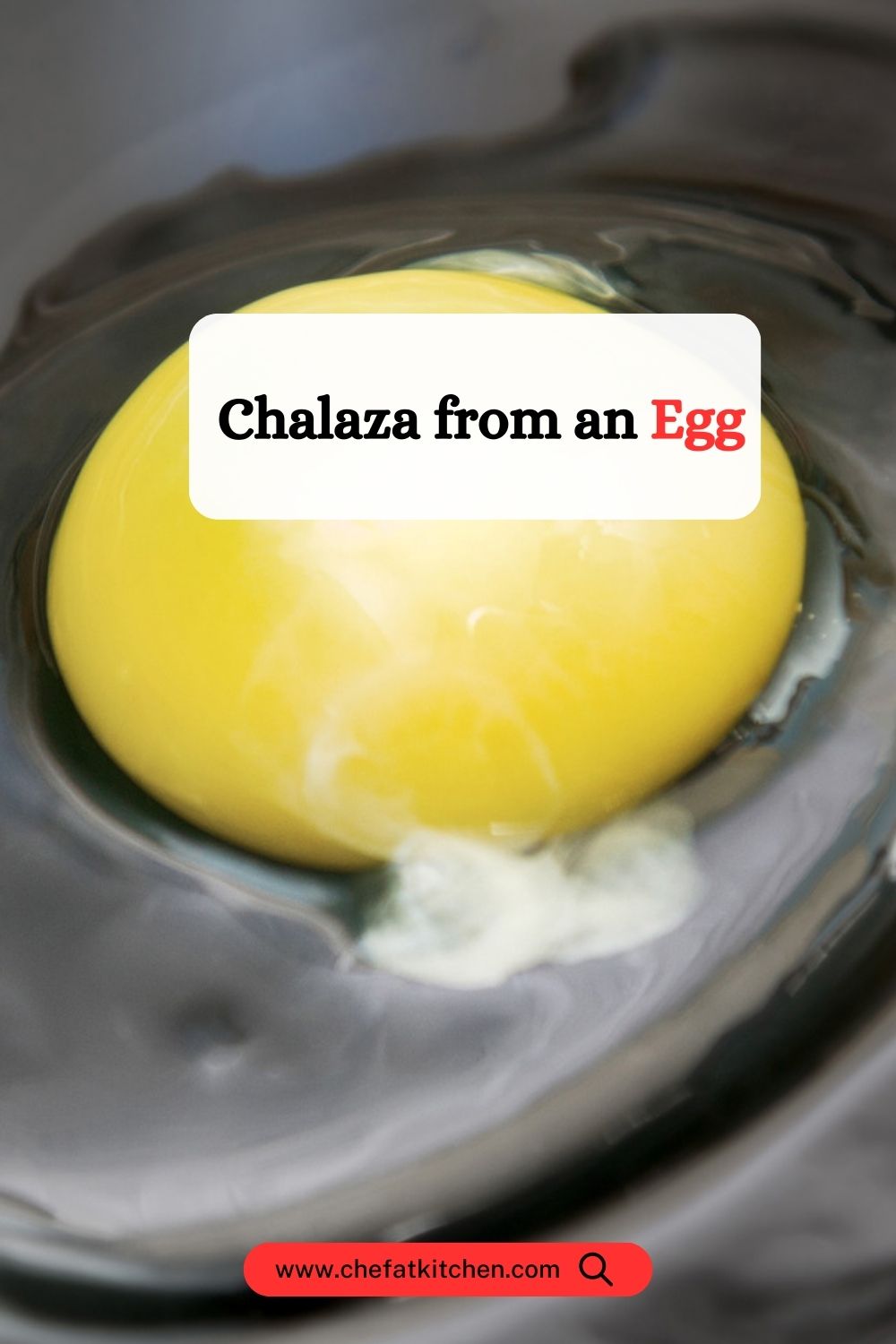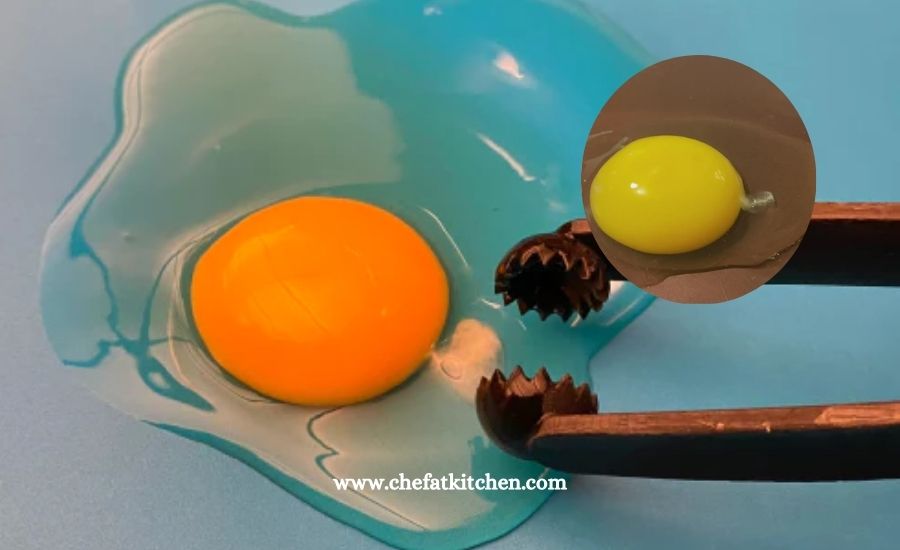Every product is independently reviewed and selected by our editors. If you buy something through our links, we may earn an affiliate commission at no extra cost to you.
Eggs are a staple in many kitchens, and while most people focus on the yolk and egg white, there’s a lesser-known component called the chalaza.
The chalaza is a thick, rope-like structure that helps anchor the yolk in place within the egg white.
While it’s perfectly safe to consume, some people prefer to remove it for a smoother texture in their culinary creations.
In this article, we’ll delve into the world of chalazae and provide a step-by-step guide on how to remove them from eggs.
How To Understand The Chalaza Removal Processing

When it comes to cooking with eggs, understanding the chalaza removal process can help you achieve a smoother texture in your dishes.
The chalaza is that weird white stringy thing you see in raw eggs, and while it is safe to eat, removing it can make a difference in the final outcome of certain recipes.
In this guide, we’ll go through the step-by-step process of removing the chalaza from an egg, as well as the tools and materials you’ll need. Let’s get started!
What Tools And Materials Do You Need?
In order to successfully remove the chalaza from an egg, you’ll need a few simple tools and materials:
- A fork
- A strainer
- A bowl
That’s it! These common kitchen items are all you need to remove the chalaza and achieve a smoother consistency in your recipes.
Step-by-step Chalaza Removal Guide
Now that you have your tools and materials ready, here is a step-by-step guide to removing the chalaza from an egg:
- Start by cracking the egg into a bowl, being careful not to break the yolk.
- Once the egg is cracked, you’ll notice two white stringy pieces attached to the yolk. These are the chalazae.
- Using a fork, gently poke and lift one end of the chalaza to separate it from the egg white.
- Continue to lift and remove the chalaza piece by piece until you have removed both strands.
- If you prefer a completely smooth consistency in your recipe, you can strain the egg through a fine-mesh strainer to catch any remaining chalaza.
- Now that the chalaza has been removed, you can proceed with using the egg in your chosen recipe.
By following these simple steps, you can easily remove the chalaza from an egg and achieve a smoother texture in your dishes.
Whether you’re making a custard, curd, or any other recipe that requires a smooth consistency, this process can make a difference. Enjoy cooking with chalaza-free eggs!
Common Questions About Chalaza
If you’re cooking a dish that requires smooth eggs like a custard or curd, consider removing the chalaza with a fork. However, the chalaza is safe to eat and just blends in with the egg white when cooked.
What Does The Chalaza Look Like?
The chalaza is a thick, rope-like structure that can be found in the egg white. It is made up of egg white proteins and helps to anchor the yolk in the center of the egg.
The chalaza looks like a white, semi-translucent strand that can be seen when cracking open a raw egg. It is typically located on either side of the yolk, but it does not affect the taste or quality of the egg.
Can You Eat The Chalaza?
Yes, you can eat the chalaza. Despite its appearance, the chalaza is safe to consume and does not pose any health risks. It is composed of proteins similar to those found in the egg white and does not have a distinct taste or texture when cooked.
However, some chefs and cooks prefer to remove the chalaza when preparing certain dishes to achieve a smoother consistency. Ultimately, whether you choose to eat the chalaza or not is a matter of personal preference.
Does Removing The Chalaza Affect The Egg’s Quality?
No, removing the chalaza does not affect the quality of the egg. The chalaza serves a structural purpose and does not contribute to the taste or nutritional value of the egg.
If you are cooking a recipe that requires a smooth consistency, such as custards or curds, you may choose to remove the chalaza to achieve a better texture.
However, for most recipes, leaving the chalaza intact will not make a noticeable difference in the final result. It is simply a matter of personal preference and cooking style.
Challenges And Alternatives
When it comes to removing the chalaza from an egg, there are a few challenges that you may encounter.
However, there are also alternatives you can consider if you prefer not to remove the chalaza. Let’s take a closer look at these challenges and alternatives below:
Are There Any Challenges Associated With Chalaza Removal?
While removing the chalaza from an egg might seem like a simple task, there are a few challenges you might face. One challenge is that the chalaza is attached to the egg white quite firmly, making it difficult to remove without potentially damaging the egg.
Additionally, removing the chalaza may also result in a loss of some of the egg white, which could be a concern if you need a specific amount for your recipe.
Furthermore, if you’re not careful, you run the risk of contaminating the egg with bacteria from your hands or any other utensils you use during the removal process.
It is important to practice proper hygiene and wash your hands thoroughly before and after handling the eggs to avoid any contamination.
Are There Any Alternatives To Removing The Chalaza?
If you find the challenges associated with chalaza removal off-putting or if you simply prefer not to remove it, there are alternatives you can consider.
One alternative is using a fine-mesh strainer to separate the chalaza from the egg white. By pouring the egg through the strainer, the chalaza will be caught in the mesh while allowing the smooth egg white to pass through.
Alternatively, if you are using the eggs for recipes that require a smooth consistency, such as custards or curds, you can consider whisking the whole egg thoroughly.
This will help evenly distribute the chalaza within the egg mixture, resulting in a smoother texture in your final dish.
It is worth noting that the chalaza itself is safe to eat, and there is no known nutritional harm in consuming it.
Some chefs and cooks even prefer to leave the chalaza intact, as they believe it adds a touch of authenticity to their dishes. Ultimately, the decision to remove or keep the chalaza depends on personal preference and the specific requirements of your recipe.
Should I Remove Egg Chalaza?
You don’t have to remove the egg chalaza unless you want a smoother texture in your dish. When you cook the egg, the chalaza will disappear and blend with the egg white.
Some chefs prefer to remove it for certain recipes, but it is safe to eat and doesn’t have any nutritional harm
Do Chefs Remove The Chalaza?
Chefs and cooks have different opinions on whether to remove the chalaza. Some remove it for a smoother texture in dishes like custards, while others leave it as it is safe to eat and has no nutritional harm. It’s a matter of personal preference and cooking style.
How Do You Remove The White String From An Egg?
To remove the white string from an egg, simply strain the eggs through a strainer or use a fork to carefully remove the string.
The white string, known as the chalaza, is safe to eat but can be removed if you need a smoother consistency for certain recipes.
Is The White Stuff In Eggs Sperm?
No, the white stuff in eggs is not sperm. It’s called chalaza and it is safe to eat.
Conclusion
Removing the chalaza from an egg is a simple process that can enhance the appearance and texture of your culinary creations.
While the chalaza is entirely safe to eat, those who prefer a smoother consistency can follow these easy steps to achieve the desired result. Experiment with different recipes and enjoy the versatility of eggs in your kitchen!
Ultimately, whether you choose to remove the chalaza or not is a matter of personal preference and cooking style. Happy Cooking!

